
At RecipeNet.ca, each recipe is categorized based on its compatibility with various diets. Some categories have more recipes than others depending on the interests of our members. If you have recipes you’d like to add to one of our categories consider joining our community!
Please note that not all diets are appropriate for all people. We recommend consulting with a qualified health practitioner before embarking on a new diet plan. As well, depending on your personal situation, a certain diet may be beneficial either for the short term or long term.
Below is a list of the diet categories with a brief explanation.
We used to call this category “vegan” but over the years that term has come to mean more than just a diet, so we now use “plant-based”.
There may be small amounts of animal products but only if the ingredient is easily substituted with a plant-based alternative (for example, honey can often be replaced with maple syrup or agave nectar). Usually an alternative will be suggested in either the comments or the recipe itself.
Any recipe with the word “vegan” in the title will be completely free of animal ingredients.
Recipes in this category contain no dairy products. Those that contain alternatives to dairy are also tagged as Alternative Dairy. Common foods used to make dairy-free milk, yogurt and cheese include soybeans, nuts and coconuts.
Recipes compatible with a Raw Food diet will have ingredients that haven’t been heated above 117 F. While some follow this diet long term, others find it more useful in the short term. For example, some follow it during the summer months while doing a cleanse. These recipes can also be useful for those who just want to include a bit more raw food in their diet.
This category refers to the Lacto-Ovo Vegetarian Diet which contains no meat but may have dairy, eggs or honey.
Plant-based and Vegetarian recipes that call for tofu, tempeh, soy-based protein powders, etc. are also tagged as Soy Products.
Meat and cheese analogues that are made with soy will be under both Soy Products and Meat & Cheese Analgoues.
Recipes calling for whole beans and lentils, including whole soybeans (and edamame) are tagged as Beans & Lentils.
This category is for people interested in trying alternatives to wheat but are not concerned about gluten. These recipes contain gluten-containing grains such as barley, as well as older and ancient relatives to modern wheat such as spelt, kamut and einkorn (used in the bread shown left).
This category has no recipes with gluten-containing ingredients, and includes all types of dishes. Typical gluten-free flours include rice, buckwheat, corn, quinoa and millet (shown left).
These recipes contain no grains or grain-based products. Typical grain-free flours include ones made from coconut, almonds (or other nuts), beans, and root vegetables such as potato and sweet potato. Less common are flours made from green bananas and plantains.
Coconut flour was used in the chocolate cake shown left.
Wheat-Free, Gluten-free and Grain-Free baked goods using special types of flours are also, tagged as Alternative Flours. This tag includes ANY flour that is not derived from modern wheat.
A Paleo diet attempts to approximate the diet of ancient hunter gatherers. It avoids grains, legumes, dairy and all processed foods.
Baked goods are not a staple on this diet, but when they are made, they usually contain almond or coconut flour. These will be cross referenced under the Alternative Flours tag.
These recipes are compatible with the Ketogenic diet which suggests a carb intake below 20 g / day (or 50 g / day if less strict). They may also be higher in fat (but not necessarily so).
Baked goods usually contain almond or coconut flour, as well as low carb sweeteners such as stevia.
An animal-based diet is centred around meat and fleshed out with fruits which are lower in plant protective compounds than other plant foods. Seeds, stems and roots are avoided. Fruits can be high-carb (pineapple, bananas) or low-carb (berries, cucumber, olives). Nightshades are avoided. Dairy can be added if tolerated.
This diet is generally adopted by those with autoimmune conditions, other inflammatory conditions, certain mental illnesses and weight issues.
Some people for either a limited amount of time or long-term will eschew all plant foods and dairy, and this depends on the severity of their condition.
Right now we do not have a lot of recipes for this diet. Most of them are fruit-based with no meat, because the meat ones have ingredients that are not allowed. We will add more recipes as we find them.
These recipes contain less sugar than ordinary recipes of that type.
Recipes are not necessarily low-carb. Please refer to the Keto recipes for low carb options.
Whether a recipe qualifies for this category depends not on how much sugar it has, but how much sugar is commonly used. For example, Dorothy W.’s Mulled Apple Cider recipe contains no added sugar. Cider itself is naturally high in sugar but a lot of similar recipes call for added brown sugar or maple syrup. Recipes in this category that use alternatives to sugar will also be tagged as Alternative Sweeteners.
Recipes are categorized based on the actual ingredients list. Suggestions for alternative ingredients in the body of the recipe are not taken into account.
Either / Or Ingredients
Sometimes the ingredients list will call for either one ingredient or another such as:
Milk or Soy Milk – 1 cup
In this instance the recipe would be categorized as dairy-free. If the author only suggests a non-dairy milk as a footnote in the recipe, then it will not be tagged as dairy-free because it will not be obvious enough to the reader.
Optional Ingredients
If a recipe calls for an optional ingredient then the recipe is categorized as if that ingredient is not used. For example:
Oyster sauce – 1 Tbsp (optional)
would be categorized as plant-based if all other ingredients qualified.
Non-Specific Ingredients
If a recipe calls for a non-specific ingredient, then a judgement call is made based on the types of recipes generally submitted by that member, the availability of that ingredient for different diets, as well as other factors.
For example, if a recipe calls simply for “pasta”, it might be categorized as gluten-free since there are so many gluten-free options on the market today and it is very easy to substitute a gluten-free pasta for a gluten-based one. Usually there will be a note reminding readers that the recipe is gluten-free only if appropriate pasta is used. However, should such a note accidentally be absent, it is the responsibility of all visitors to ensure they are not consuming products that are not on their particular diet.
If a recipe calls for “one cup flour” without specifying the kind, then it will be assumed the author means wheat flour. The recipe will not be categorized as gluten-free because substituting ingredients in baking requires adapting other ingredients.
Questions?
Please feel free to leave a comment below or send us a message via our Contact Page.
Photo acknowledgements:
- Healthy Diet banner is a clip from an illustration by Moremar design / Shutterstock.com
- Seaweed Salad by Irina Rostokina / Shutterstock.com
- Black bean & Quinoa salad by yingko / Shutterstock.com
- Raw carrot cake by Ievgeniia Maslovska / Shutterstock.com
- Vegetarian Quesadilla by Nina Firsova / Shutterstock.com
- Tofu spread by Elena M. Tarasova / Shutterstock.com
- Einkorn bread from Jovial Foods
- Millet Flour by Heike Rau / Shutterstock.com
- Quiche by Bloor Photo / Shutterstock.com
- Beef Stew by Mariemily Photos / Shutterstock.com
- Cauliflower, Bacon & Cheese casserole by Azra H. / Shutterstock.com
- Steak on Grill by Skitterphoto / Pexels.com
- Fruit Smoothie by Element 5 Digital / Pexels.com
- Salmon Steak by Robert Bogdon / Pexels.com
- Mulled Apple Cider by Brent Hofacker / Shutterstock.com
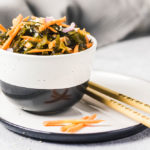
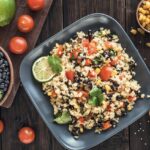
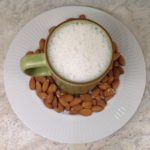
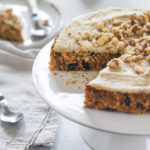
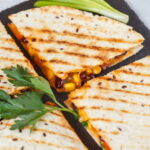
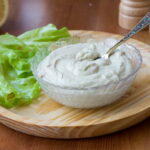
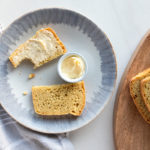

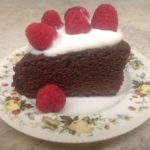
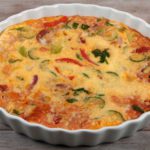

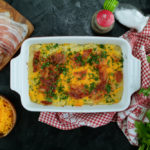



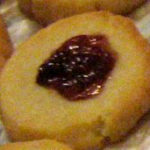
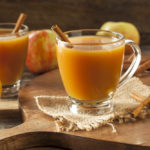
No Comments